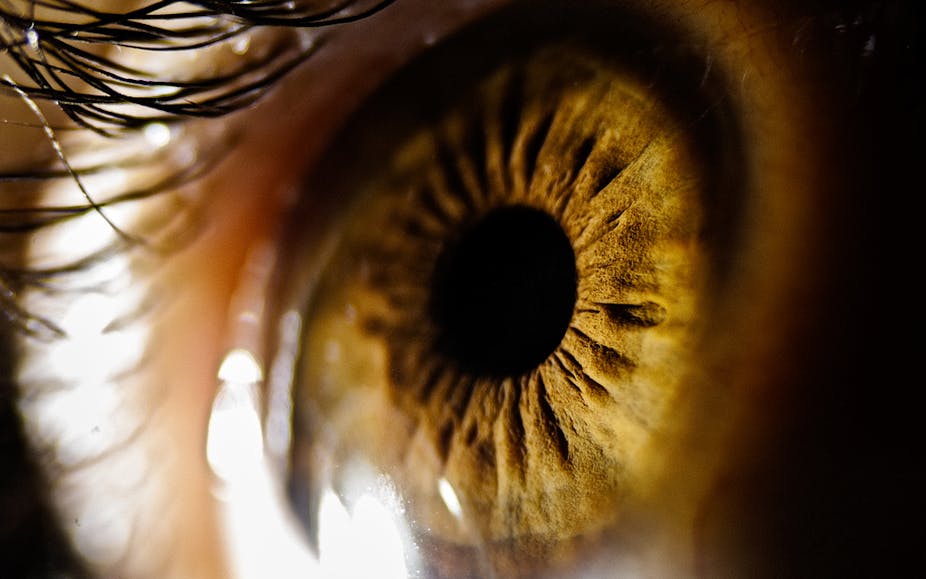When people think about biomechanics in health it’s more than likely they will think of treatments related to the human musculoskeletal system, such as treating knee injuries or osteoarthritis. But this field of research, which involves understanding biological systems through mechanics, has many more applications, including its use in treating common and serious eye conditions.
The eye is a pressurised vessel and many processes within it can be understood with the principles from solid and fluid mechanics. Common eye disorders such as glaucoma and myopia (near-sightedness) are associated with profound biomechanical changes. For example, with myopia the region at the back of the eye globe becomes elongated and mechanically weaker.
One of my research interests in ocular biomechanics is keratoconus, a progressive, degenerative disease that is now considered to be a major clinical problem worldwide, affecting up to 600 people per 100,000. Although this could be considered relatively rare, the condition appears to be on the rise.
Keratoconus poses important biomechanical questions because as the disease progresses the cornea becomes thinner, cone-shaped and mechanically weak. This leads to increasing myopia and astigmatism, and in later stages the transparency of the cornea can be lost due to scarring. Ultimately, a corneal transplant may be required due to the scarring and extreme thinning of the cornea.
Interest in keratoconus is not just an academic pursuit, but also personal. My brother and I were recently diagnosed with a mild form of the disease and I was recently involved in a study which looked at measuring mechanical changes that can be induced in the cornea. This exciting and relatively new clinical procedure uses riboflavin (vitamin B2) and ultraviolet-A (UVA) light irradiation to halt progression of the disease.
The cornea is composed of a regular matrix of collagen fibres which provide mechanical support. These fibres are strengthened by inter-molecular bonds or cross-links. In keratoconus, it is thought that these cross-links are abnormal and reduced, which results in a bulging shape of the cornea and the associated thinning and mechanical weakness.
The riboflavin/UVA procedure aims to induce additional cross-links in the cornea. It not only increases the stiffness and strength of the cornea but has an additional benefit as it also flattens the cornea, reducing myopia and astigmatism. There are still many unanswered questions regarding this procedure, such as the safety and efficacy of high intensity UV treatments that are now being developed, which we hope to tackle in future research.
I am also interested in increasing our understanding of the structure and properties of the sclera, or the white of the eye. The sclera is not just an inert casing that holds the eye together, but it also has an important biomechanical role in healthy eye function.
People with myopia see distant objects as blurred because images are focused in front of the retina rather than on it due to an abnormal shape of the eyeglobe. Myopics have a weaker and elongated sclera. Compared to the cornea, the sclera has a much more complicated structure and is less extensively studied. The sclera is another area where biomechanics could help with answers.
Historically, there has been less interest in ocular biomechanics research compared to other disciplines in the biomechanics field although there is now more notice. Over the last decade, the development of innovative computational and experimental techniques have allowed scientist to accurately determine the mechanical behaviour of the eye and helped to build medical devices to improve the management and treatment of a number of ocular conditions. For example, such research has led to significant developments in the tonometry devices that are used in opthalmology clinics to measure fluid pressure within the eye. With the current international drive in this area, there will ultimately be further progress in tackling challenging eye diseases with biomechanics research.

